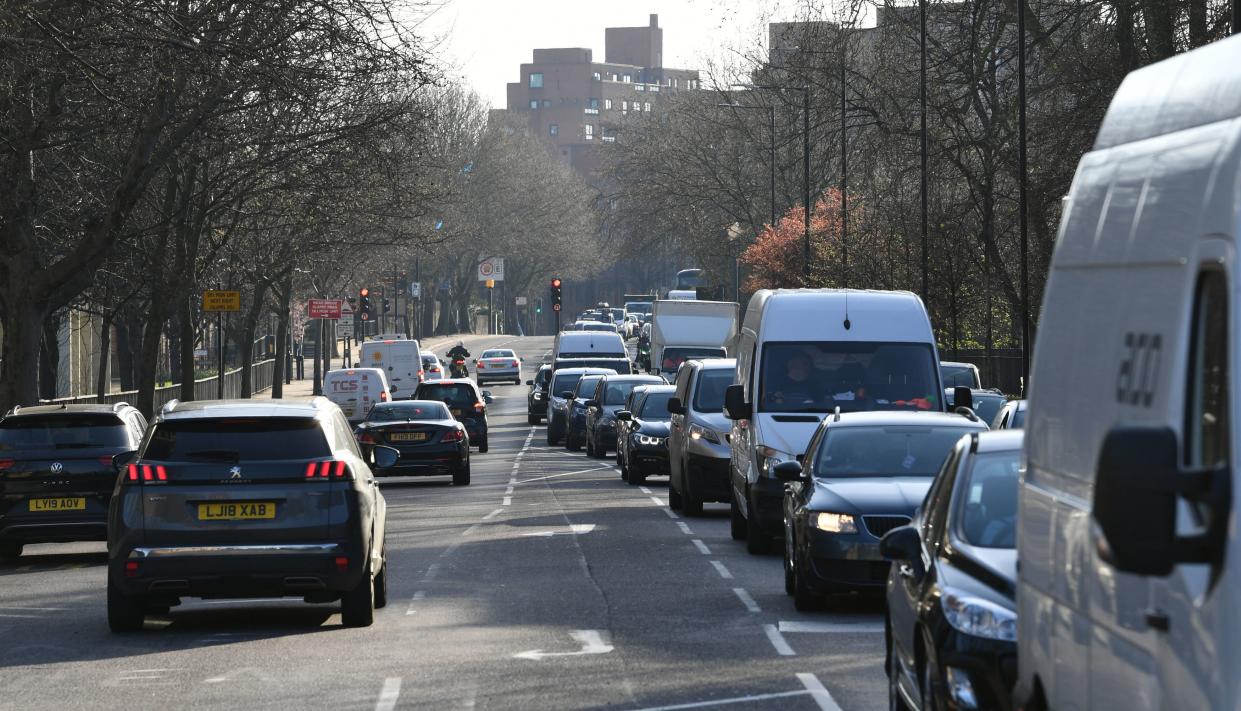Motorway speed limits cut to 60mph in some areas with high pollution levels

Motorway speed limits will be cut to 60mph in some areas in an effort to lower dangerous levels of air pollution.
In a report, Highways England identified 30 areas where its road networks have levels of toxic nitrogen dioxide (NO2) that exceed the legal limits of 40 micrograms (µg) per cubic metre; 35 additional areas are also being investigated.
In at least nine out of the 30 identified areas, the speed limit will be cut to 60 mph or lower in order to reduce NO2 emissions, including sections of the M32 in Bristol, the M6 near Birmingham and the M1 between Sheffield and Rotherham.
Initial assessments conducted by the organisation found that managing speed at 60mph resulted in an average 17 per cent reduction in NO2 emissions, while having a “negligible” impact on journey length.
These speed limits are set to remain in place for the foreseeable future to allow pollution levels to come down to well below the legal limits.
Watch: EU proposes ban on new fossil-fuel car sales from 2035
A section of the A3 near Guilford registered levels more than double the legal limit, while the A34 west of Oxford had levels of 69 µg per cubic metre. These levels were recorded in 2020, when the country witnessed a sharp drop in road traffic during the pandemic.
Neither of these high-emitting motorways are set to see a speed limit reduction. Instead, Highways England is considering installing a 9.3 metre high barrier in Guilford to shield the area from fumes from the A3.
Highways England is also using other initiatives to reduce emissions including a plan to divert HGVs from two sections of the A500 to junction 15 of the M6 during off-peak hours.
The organisation has been working with local authorities to implement “try-before-you-buy” schemes to encourage uptake of zero emission vehicles.
As part of a bid to bring down NO2 levels, the government is aiming to end the sale of all new conventional petrol and diesel vars and vans before 2030.
The report found that there were “no viable measures available” to improve air quality 17 out of the 30 areas it identified for having illegal levels of NO2.
Where no mitigation measures were available, the report said Highways England would “carry out additional air quality monitoring” and continue to “investigate whether there are new or emerging ideas and/ or technologies that could be considered to improve air quality”.
Mike Wilson, chief highways engineer at Highways England, said: “Poor air quality is the largest environmental risk to public health in the UK, known to have severe effects on vulnerable groups such as the elderly, children and those suffering with pre-existing health conditions.”
He added: “It can also be damaging to the environment, with negative impacts on animal and plant life.”
While Mr Wilson said that Highways England was committed to improving air quality and supporting the aims of the government’s UK NO2 plan, he admitted, “the long-term solution to improving air quality will come from the shift to lower emission vehicles”.
NO2 is released into the atmosphere when fuels are burned, and can cause inflammation of the airways and increase susceptibility to respiratory infections, allergens and has been linked to asthma. It also contributes to acid rain and nutrient pollution in coastal waters.
Watch: New York's climate change-themed mini golf course
Read More
World’s new net zero roadmap: What does it mean for fossil fuels in the UK?
A serious annoyance? How the policing bill could stifle climate protests
UK has just 15% of electric vehicle charging points needed to hit climate targets, warns Labour

 Yahoo News
Yahoo News 
